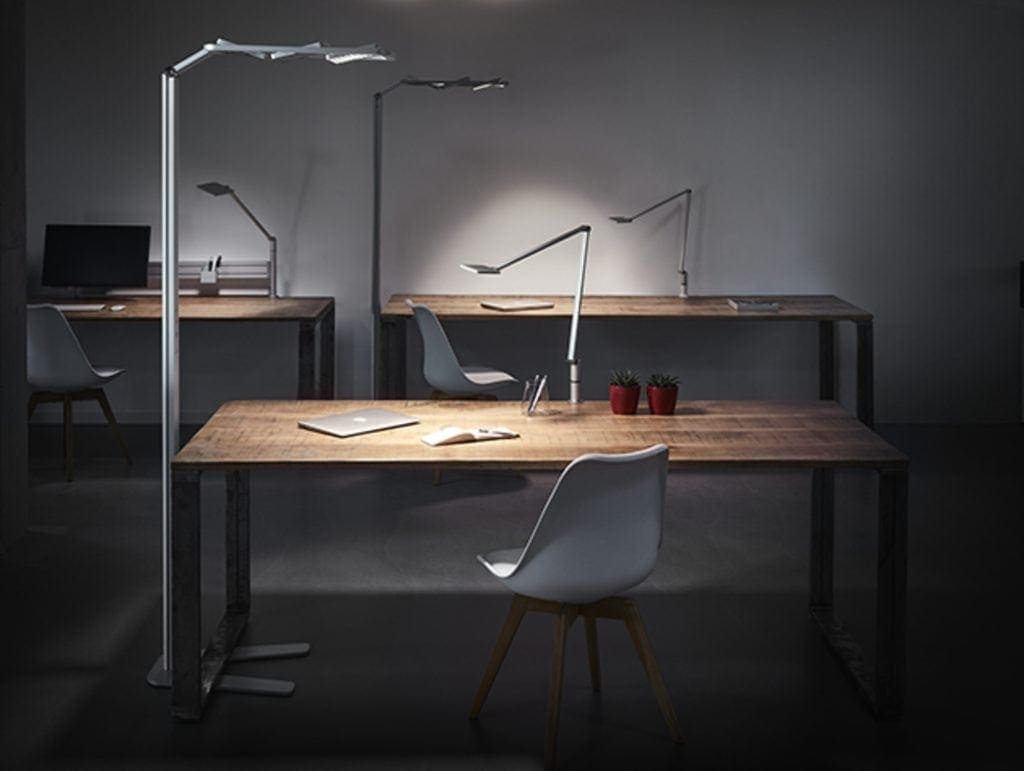What were the times when you walked into the wood-paneled office every morning at the same time in a suit: GL meeting with coffee and biscuits at 10 o’clock, 12 o’clock canteen and 17 o’clock closing time. Flexibility? None. Today, our everyday work is completely different, reflecting our whole life: flexible, modern and full of possibilities.
This has resulted in very different workplace models, all of which – as well as the good old permanent workplace – bring both advantages and disadvantages.
The permanent workplace – the familiar gives security
Many people are habit animals, which is why employees are reluctant to give up their permanent job. They know exactly what to expect in the morning and feel at home in their workplace. It also offers some privacy. The disadvantage: it offers significantly less transparency, communication possibilities and entices to remain in old patterns.

Variable jobs – open to new ideas
Flexible life – flexible thinking – flexible working. The Generation Y, but at the latest the generation of Millennials stands for this way of life. Over the next few decades, they will form 75% of the workforce, and thus a strong majority that focuses on “work-life integration” and thinks mobile. Therefore, the freely selectable workplace, also called non-territorial workplace, has the potential to become the workplace of the future. Because it offers variable and result-oriented work independently of the workplace.
Especially in consulting companies, agencies and large companies with many mobile employees, such as a large sales organization, flexible workplaces have already arrived. Especially in companies where employees work a few days a week, that makes perfect sense. A vacant job costs. Among other things, the flexible workplace is also a key to greater efficiency. Here is an overview of flexible workplace concepts:
The home office
The home office can be used as a main workspace as well as a flexible alternative or supplement to the office. He offers many advantages. Are the craftsmen coming during working hours? Are there any changing requirements for working hours? This is not a problem with a home office. This means more freedom, more self-determination and the opportunity for a better work-life balance. But what at first sounds almost heavenly also has its downsides. You definitely need a lot of self-discipline, good time management and above all a job that is not only inviting, but also protects you from distraction.
Co-Working Spaces
Here, workplaces and infrastructure such as Network, printer, telephone, video projector and meeting rooms provided for a limited time. In a co-working space, you can hire a permanent home workplace that you do not share with anyone, as well as a flexible workspace that you use on a few workdays as needed. Above all, work in a coworking space is suitable for: startups, founders, freelancers, bloggers, students, sidepreneurs, digital nomads. The advantages for coworkers: Professional equipment, technical infrastructure, high flexibility, good cost efficiency and the opportunity for networking and community. The primary risk is to confuse coworking spaces with fancy place to be. In addition, the noise level can be very high there and of course there are costs.
Desk-Sharing
Desk Sharing means there are fewer jobs than employees within an organizational unit. Employees can choose their workplace freely and newly daily. Important requirement for this:
- clean desks with some basic equipment and tools such as pens, punches, staplers and scissors, so everyone can fall back on it
- simple planning e.g. via a digital booking system
- Possibility of accommodating personal e.g. in roll containers
For employers, the advantage is in particular the cost-benefit efficiency, the optimal use of resources and increased productivity. For employees, desk sharing offers equality, less distraction, avoidance of work and improved and more open communication. Of course, there are disadvantages here as well. Some miss the familiar colleague next door and feel stressed by the regular “tree-change-you”.

Flexible use of company cars, electric scooters or e-bikes
In addition to the flexible use of desktops, the flexible use of company-owned means of transport is now part of modern workplace design. With electric scooters such as those offered by emco e-sccoter, for example, it is quick and easy to switch between different workplaces at any time. Read more about eco-conscious electric scooters for corporate use at emco e-scooter.

Every workplace should be equipped like this
Whether you appreciate your permanent workplace or prefer to work in the home office, coworking space or with desk sharing – all workplaces have one thing in common: the requirements for workplace design. You should feel comfortable in the workplace, be able to take a healthy posture and of course use a functional equipment. For this we recommend you to pay attention to the following 2 points:
Ergonomics
An ergonomically adapted workplace equipment is essential. For this, it is crucial that the desk chair supports a healthy posture. For flexible workplaces flexibility is also required: individually adjustable height, back and armrests. The same applies to the desk equipment. Ideally you also use for laptop, mouse, etc. flexible equipment. Our tip: flexible support arm systems for the monitor – so you can adjust the screen to the right place and the right height.
Function
With a high-quality task light you are doing your eyes something good. It is best, of course, if this is also individually adjustable. So you have the best conditions at every workstation to be comfortable, focused and productive.
Ultimately, one thing is always important: no matter at which workplace, in which office or with which means of transport you are on the move – always staying flexible. Then you can not be disturbed and you stay mobile and modern!
